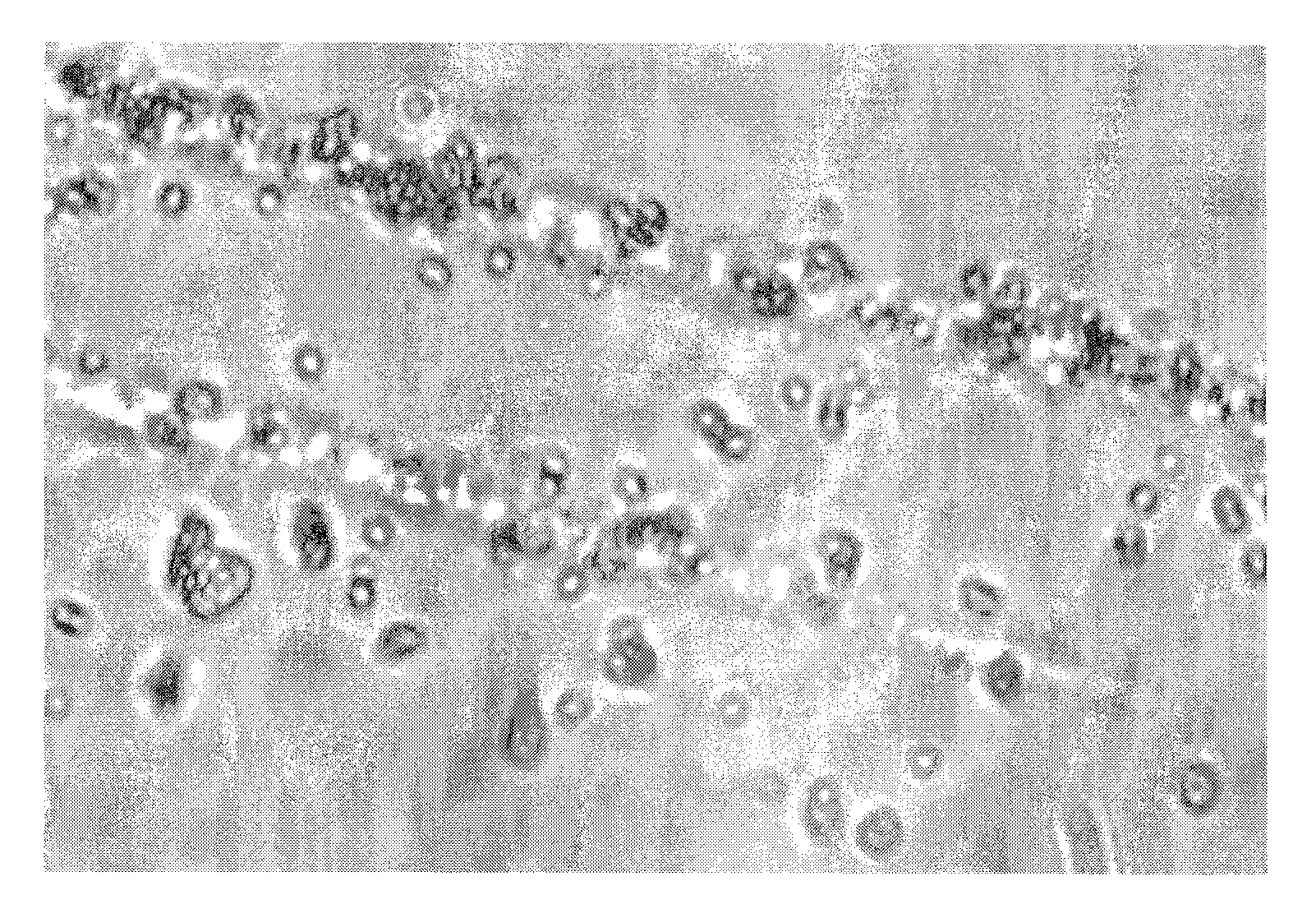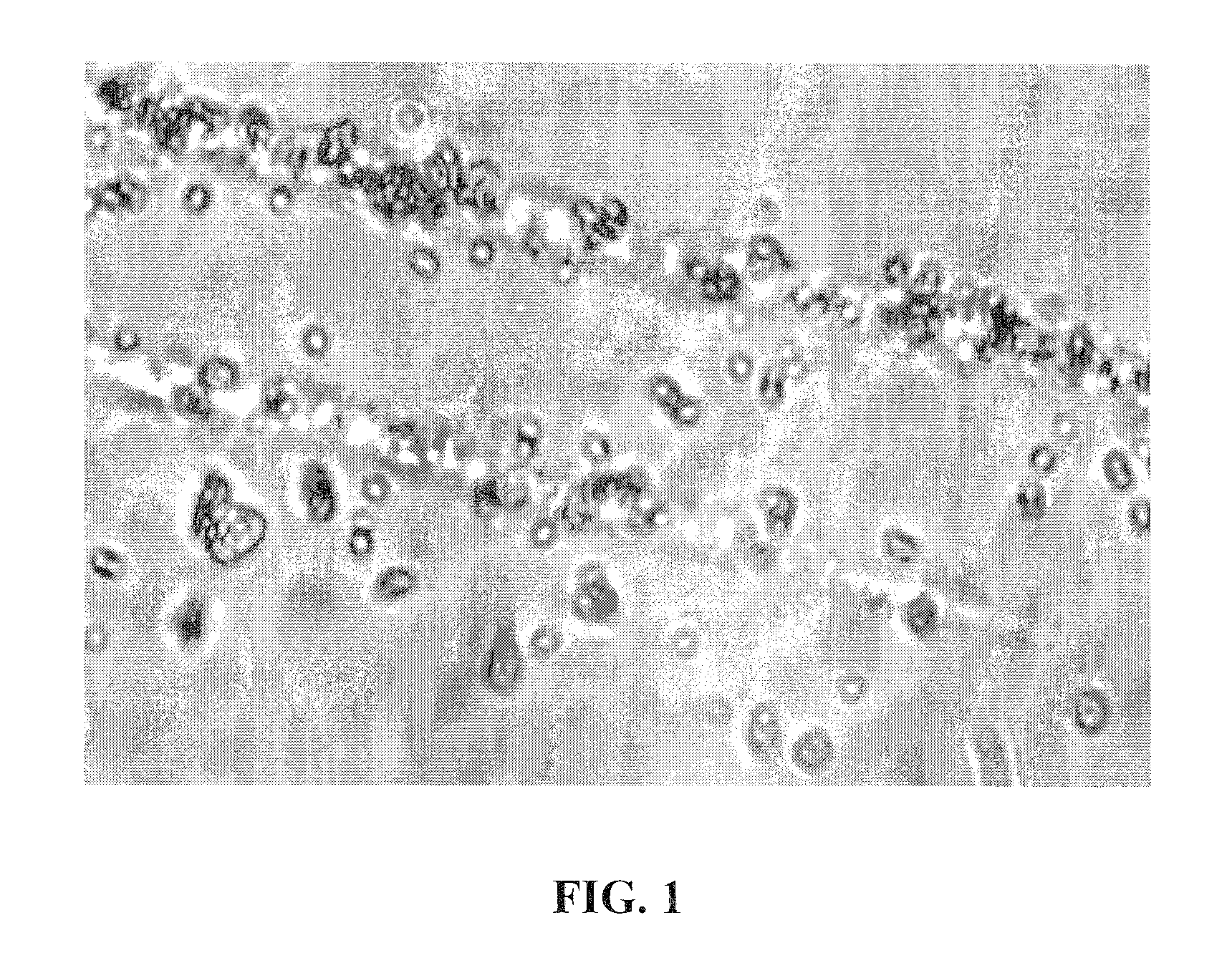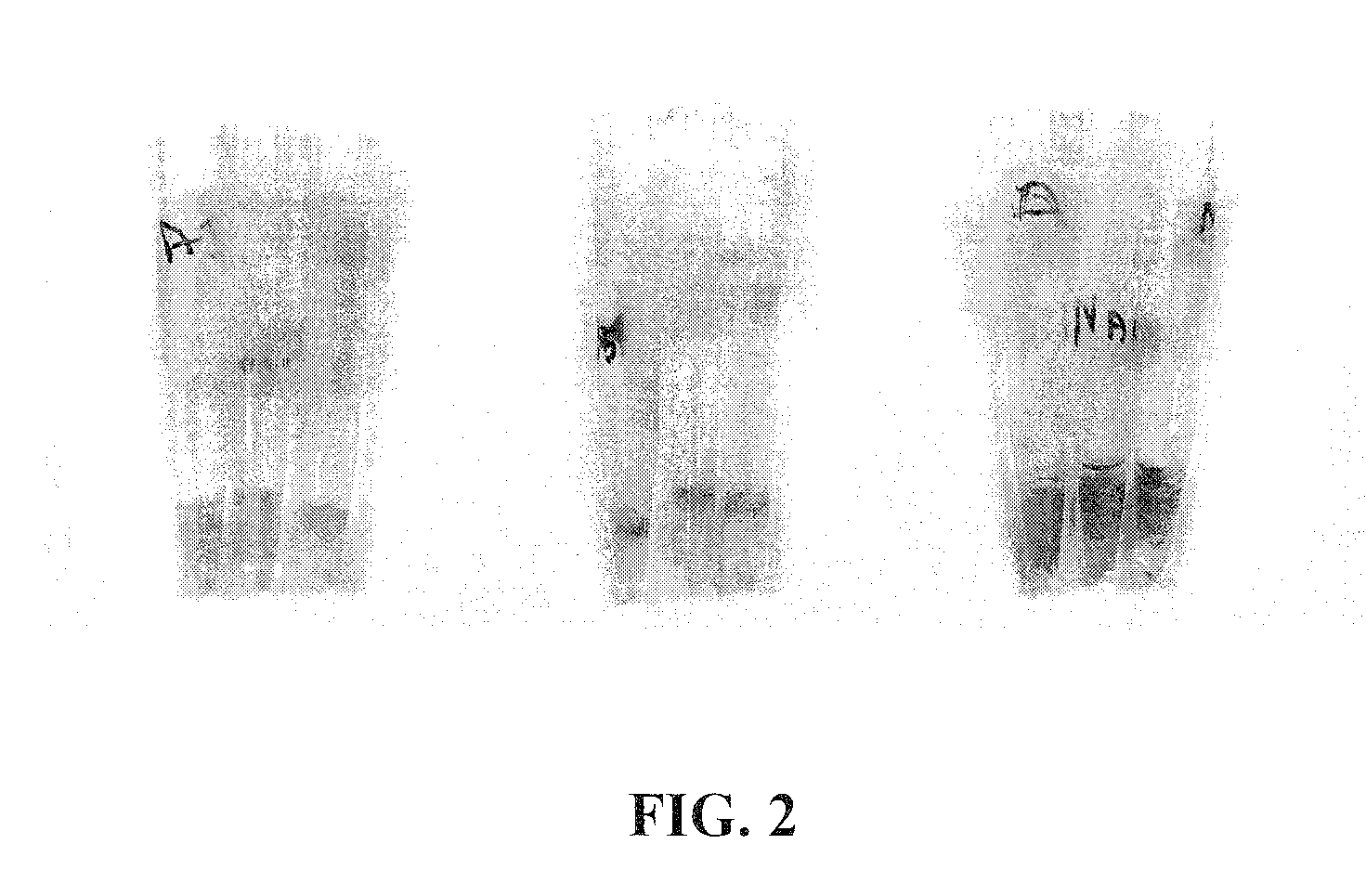Silica-based material for detection and isolation of chitin and chitin-containing microorganisms
- Summary
- Abstract
- Description
- Claims
- Application Information
AI Technical Summary
Benefits of technology
Problems solved by technology
Method used
Image
Examples
example 1
Preparation of Chitin-Binding Glass
[0097]This Example illustrates methods for preparing chitin-binding glass, which can be used for isolation, purification, removal and / or detection of chitin-containing microorganisms. In an embodiment, chromatographic columns for isolation of chitin-containing microorganism are prepared as follows. Briefly, glass beads purchased from Sigma Chemical Company were washed and boiled in deionized water, and then soaked in 10% acetic acid. The acid-treated beads were then used to pack chromatographic columns. In another embodiment, chromatographic columns useful for detection of chitin-containing microorganisms were prepared by packing glass wool (also known as glass fiber or fiberglass; purchased from Pyrex) into chromatographic columns, followed by soaking the column packed with glass wool in the column in 10% acetic acid.
example 2
Isolation of Chitin-Containing Microorganisms by Chitin-Binding Glass
[0098]This Example illustrates the isolation of chitin-containing nicroorganisms by chromatographic columns packed with glass beads. Briefly, samples believed to contain chitin-binding microorganisms are diluted at about 0.1:10 to about 1:10 in binding solution, and loaded onto the chitin-binding column packed with glass beads. The column is washed with 3 column volumes of phosphate buffered saline (PBS) or PBS containing about 0.05% to about 2% Tween (PBS-T) at pH 7.5. Chitin-containing microorganisms are eluted from the column by applying 3 column volumes of elution buffer (pH 8), consisting of 20 mM Tris, 2 mM EDTA. The elute is centrifuged at 12,000×g for 15 min or until a pellet is formed. The supernatant is discarded, and chitin-containing microorganisms are isolated by recovering the pellet. Optionally, the pellet may be resuspended in PBS to form spore suspension.
example 3
Detection of Chitin-Containing Microorganisms
[0099]This Example illustrates detection of chitin-containing microorganisms such as microsporidia using in-situ immunochemical staining of spores bound to chitin-binding columns packed with glass fiber. Briefly, spores of chitin-containing microorganisms are isolated by using chitin-binding glass column packed with glass beads, as described in Example 2. The spore suspensions are loaded onto the chitin-binding glass fiber column. The column is washed with 3 column volumes PBS containing about 0.05% to about 2% Tween 20, followed by 3 column volumes of PBS-T. The column is then incubated with 1 ml primary antibody (antibody to microsporidia), diluted 1:100-1:1,000 (dilution depends on antibody concentration) in PBS-T. The column is then sequentially washed with 3 column volumes of PBS containing 10 mM EDTA, followed by 3 column volumes of PBS-T. The column is then incubated with 1 ml alkaline phosphatase-conjugated secondary antibody dilu...
PUM
| Property | Measurement | Unit |
|---|---|---|
| Alkalinity | aaaaa | aaaaa |
Abstract
Description
Claims
Application Information
 Login to View More
Login to View More - R&D
- Intellectual Property
- Life Sciences
- Materials
- Tech Scout
- Unparalleled Data Quality
- Higher Quality Content
- 60% Fewer Hallucinations
Browse by: Latest US Patents, China's latest patents, Technical Efficacy Thesaurus, Application Domain, Technology Topic, Popular Technical Reports.
© 2025 PatSnap. All rights reserved.Legal|Privacy policy|Modern Slavery Act Transparency Statement|Sitemap|About US| Contact US: help@patsnap.com



